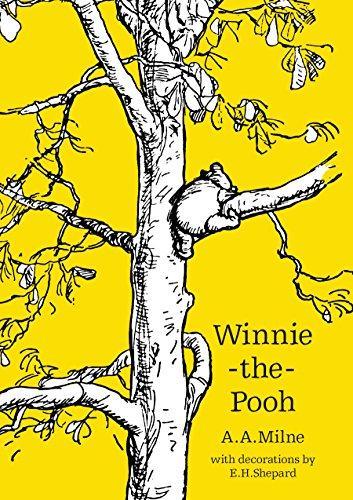lingua English
Pubblicato il 23 Settembre 2016

lingua English
Pubblicato il 23 Settembre 2016
Winnie-the-Pooh is a children’s book by English author A. A. Milne and English illustrator E. H. Shepard. Published in 1926, it is a collection of short stories about an anthropomorphic teddy bear, Winnie-the-Pooh, and his friends Christopher Robin, Piglet, Eeyore, Owl, Rabbit, Kanga, and Roo. It is the first of two story collections by Milne about Winnie-the-Pooh, the second being The House at Pooh Corner (1928). Milne and Shepard collaborated previously for English humour magazine Punch, and in 1924 created When We Were Very Young, a poetry collection. Among the characters in the poetry book was a teddy bear Shepard modeled after his son's toy. Following this, Shepard encouraged Milne to write about his son Christopher Robin Milne's toys, and so they became the inspiration for the characters in Winnie-the-Pooh. The book was well-received at release, and was a commercial success, selling 150,000 copies before the end of the year. …
Winnie-the-Pooh is a children’s book by English author A. A. Milne and English illustrator E. H. Shepard. Published in 1926, it is a collection of short stories about an anthropomorphic teddy bear, Winnie-the-Pooh, and his friends Christopher Robin, Piglet, Eeyore, Owl, Rabbit, Kanga, and Roo. It is the first of two story collections by Milne about Winnie-the-Pooh, the second being The House at Pooh Corner (1928). Milne and Shepard collaborated previously for English humour magazine Punch, and in 1924 created When We Were Very Young, a poetry collection. Among the characters in the poetry book was a teddy bear Shepard modeled after his son's toy. Following this, Shepard encouraged Milne to write about his son Christopher Robin Milne's toys, and so they became the inspiration for the characters in Winnie-the-Pooh. The book was well-received at release, and was a commercial success, selling 150,000 copies before the end of the year. Critical analysis of the book has held that it represents a rural Arcadia, separated from real-world issues or problems, and is without purposeful subtext. More recently, criticism has been levelled at the lack of positive female characters, i.e. that the only female character, Kanga, is depicted as a bad mother. Winnie-the-Pooh has been translated into over fifty languages; a 1958 Latin translation, Winnie ille Pu, was the first foreign-language book to be featured on the New York Times Best Seller List, and the only book in Latin ever to have been featured. The stories and characters in the book have been adapted in other media, most notably by Disney beginning with Winnie the Pooh and the Honey Tree (1966).